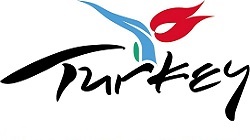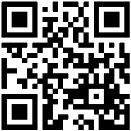- Orthopedics and Traumotology
- Plastic and Reconstructive Surgery
- Transplantation
- Ophthalmology
- Infertility Treatment
- Neurosurgery and Spinal Surgery
- Dental Treatment
- Cardiology
- Oncology
- Hair Transplantation

Injuries, brain and spinal tumors are part of a group of lesions located in anatomically complex and delicate areas. Treatment of such lesions presents a special difficulty for doctors and requires not only the removal of the problem as such, but also the preservation of the anatomy and functional components of our body. Thus, surgical skills and advanced technologies are key to successful results in treatment.
In the leading clinics of Turkiye, hundreds of operations are performed regularly, connected with all craniocerebral pathologies, including tumors such as meningiomas, chordomas, schwannomas, vascular malformations (aneurysms), arteriovenous and cavernous malformations. Innovative technologies such as intraoperative MRI 3 Tesla and Gamma Knife Perfection (Gamma Knife), a multidisciplinary approach, have recognized the neurosurgical departments of leading clinics as one of the leading centers of the world by members and management in international organizations.
Modern techniques, advanced technologies and an interdisciplinary approach are of paramount importance for radiological research, which is an integral part of deciding on a further treatment plan for neurosurgical patients.
Patients are treated in specialized clinical departments: pediatric (pediatric) neurosurgery, vascular neurosurgery, neurooncology department.
Tumors of the brain (benign and malignant), read about the treatment of oncology
Tumors of the base of the skull
Vascular diseases (cerebral hemorrhages, aneurysms of cerebral vessels, arteriovenous malformations, cavernous malformations and strokes)
Hydrocephalus (fluid accumulation in the brain)
Injuries
Congenital malformations
Infections
Functional neurosurgery (motor disorders surgery, algeological surgery)
Radiosurgery - Gamma Knife
Congenital cerebral anomalies
Hydrocephalus (fluid accumulation in the brain)
Craniosynostosis (premature fusion of the cranial suture)
Arachnoid cysts (cysts of the brain)
Craniovertebral disorders
Spinal Dystrophy
Deformations of the spine
Injuries to the spine
Degenerative disorders of the spine
Scoliosis
Kyphosis
Spondylolysis
Spine Infections
Osteoporosis
Tumors of the spine
Tumors of the spinal cord
Fibromyalgia
Pain in the neck and lower back
Herniated discs
MOVEMENT / VIOLATION OF THE MOTOR
Neurology is the leading department clinics. Turkish limestone is this treatment of neuropathic pain, swelling, muscle, nerve diseases and motility disorders.
Floor and about tdeleni I specializes in the treatment of movement disorders and all functional diseases, brain and spinal cord tumors surgery and interventional treatment of headache «AlgoLogic»
Movement disorders are neurological diseases that affect the speed, fluency of speech, quality and ease of movement. Abnormal fluency or speed of movement (the so-called dyskinesia) can include excessive or involuntary movements (hyperkinesia), as well as slowing or absence of arbitrary movements (hypokinesia).
Ataxia (impaired coordination of movements, which often leads to abrupt movements);
Dystonia (involuntary movements and prolonged muscle contraction);
Huntington's disease (the so-called chronic progressive chorea);
Multisystem atrophy (for example, Shay-Drageer syndrome);
Myoclonus (rapid, brief, irregular movements);
Parkinson's disease;
Progressive supranuclear palsy (a rare disease that affects targeted movements);
Restless legs syndrome and reflex sympathetic dystrophy / periodic restrictive limb movements;
Nervous tics (involuntary contraction of muscles);
Tourette's syndrome;
Tremor (for example, an essential tremor, a tremor of rest);
Wilson's disease (a hereditary disease that causes neurological and psychiatric symptoms and liver diseases).
Dystonia includes spastic torticollis, which affects the muscles of the head, face and neck, as well as blepharospasm, which leads to involuntary closure of the eyelids.
Tourette's syndrome is a hereditary disease and is characterized by multiple motor tics and vocal tics (repetitive muscle contractions). Symptoms of Tourette's syndrome usually develop in childhood or early adolescence. Patients with this disorder often develop behavioral problems, such as hyperactivity, inattention, impulsiveness, obsessions, and compulsions. In most cases, the symptoms differ in frequency and severity.
Nervous tics are involuntary contractions of muscles that interrupt normal activity. They often precede a strong feeling or desire that temporarily decreases after contraction of the muscles. Examples of common nerve tics include the following:
Blinking;
Cleaning of the throat;
Twitching of the face;
Grunt;
Shrinking the shoulders;
The signs and symptoms vary depending on the type and severity of the condition. The severity of symptoms of motor disorders can be influenced by factors such as anxiety, fatigue, medications and stress.
Some motor disorders cause hyperkinesia (for example, excessive spontaneous movements or abnormal involuntary movements), others cause hypokinesia (for example , lack or decrease in the ability to perform targeted movements).
Treatment of motor disorders depends on the underlying cause. In most cases, the goal of treatment is to alleviate the symptoms. Treatment may include taking medications, Botox therapy and surgery.
Antiepileptic drugs;
Anticonvulsants;
Beta-blockers;
Dopamine agonists;
Parkinson's disease can be treated using a variety of drugs.
Botox therapy is used to treat certain types of motor disorders (for example, spastic torticollis, blepharospasm, myoclonus, tremor). In this treatment, a powerful neurotoxin (which is produced by the botulinum bacterium Clostridium) is introduced into the muscle and inhibits the release of neurotransmitters that contribute to muscle contraction.
When the drugs are ineffective, with severe motor disorders, surgical intervention may be necessary. With deep stimulation of the brain, a medical device (a neurostimulator) is surgically implanted, imparting electrical impulses to the area of the brain that controls movement. An electric charge blocks nerve signals that cause abnormal movements.
With deep stimulation of the brain, the electrode is inserted through a small incision in the skull and implanted into the target area of the brain. The insulated wire then passes under the skin to the head, neck and shoulders, connecting the electrode to the neurostimulator, which is placed in the chest or upper abdomen.
With the help of ablative surgery, locate, target, and then remove clearly defined areas of the brain that produce chemical or electrical impulses, which causes the appearance of abnormal movements.
In this operation, a heated probe or electrode is introduced into the desired region. The patient remains conscious during the procedure to determine if the problem has been resolved. Use local anesthesia to anesthetize the external part of the brain and skull. The brain is insensitive to pain, so the patient does not feel the actual procedure. In some cases, it is difficult to determine how much tissue needs to be removed and how much heat to use.
This type of surgery involves either ablation of a part of the brain called the pale ball of the brain (or pallidotomy) or ablation of the brain tissue called the thalamus (or thalamotomy). In a similar procedure, cryotalamotomy, a probe with a low temperature tip is used, it is led to the thalamus to freeze and destroy the areas that contribute to the appearance of tremors.
Can do pallidotomy to eliminate uncontrolled dyskinesia (for example, sudden, involuntary movements) and thalamotomy to eliminate tremors. These procedures are successful in about 75% of cases.

WE INVITE YOU TO TURKEY FOR HEALTH!

WE INVITE YOU TO TURKEY FOR HEALTH!

WE INVITE YOU TO TURKEY FOR HEALTH!

WE INVITE YOU TO TURKEY FOR HEALTH!
